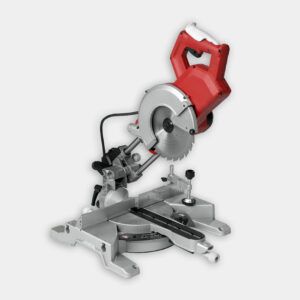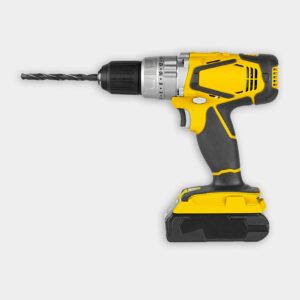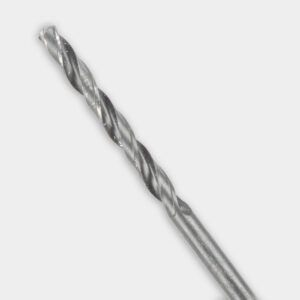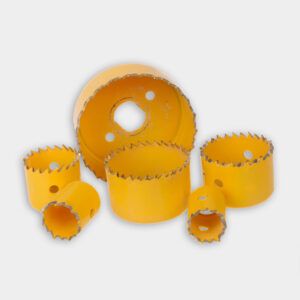We may be compensated if you purchase through links on our website. Our team is committed to delivering honest, objective, and independent reviews on home products and services.
Project details
Skill
Cost
Estimated Time
A rain barrel is an easy way to collect and store rainwater for your garden. Not only does it help conserve water, but it can also add a decorative touch to your outdoor space. This DIY project is relatively simple and can be completed in a weekend.
In this article, we’ll guide you through the process of building a stylish and functional rain barrel. This Old House contributor Christopher Beidel demonstrates the steps in the video above.
Rain Barrel Diagram
Here is a reference diagram of the parts of the rain barrel and the finished dimensions:

Rain Barrel Materials and Tools Needed
Before you begin, gather the following materials and tools:
Lumber
- 1×6 pressure-treated boards
- 5/4×4 pressure-treated boards
- 4×4 pressure-treated posts
- 1×4 and 1×3 pressure-treated boards for decorative battens
Hardware and Accessories
- 3/4-by-3-inch brass nipple
- 5 3/4-inch black door pull
- 35-gallon square plastic trash can
- Deck screws (1 1/2-inch and 2-inch)
- DIY Rain Barrel Construction and Installation Kit with Downspout Diverter
Tools
- Bar clamps
- Combination square
- Drill/driver with 1/8-inch and 3-inch bits
- Hole saw bits (included in the kit)
- Miter saw
- Pencil
- Safety glasses and gloves
- Tape measure
Preparing the Barrel Components
The first step in building your rain barrel is to prepare the components that make up the structure. Be precise in your measurements and cuts for a properly fitted and aesthetically pleasing final product.
Cutting the Slats and Battens
Here is how to cut the slats and battens:
- Use a miter saw to cut the 1-by-6-inch vertical slats for the barrel walls to 40 inches in length. Double-check your measurements before cutting.
- Cut the 5/4-by-4-inch interior battens to the specified lengths in the cut list.
- Cut the 1-by-6-inch lid slats and floorboards to fit (approximately 23 7/8 inches and 20 7/8 inches, respectively). Accurate cutting lets the lid sit properly, and the floorboards provide a stable base for the bin.
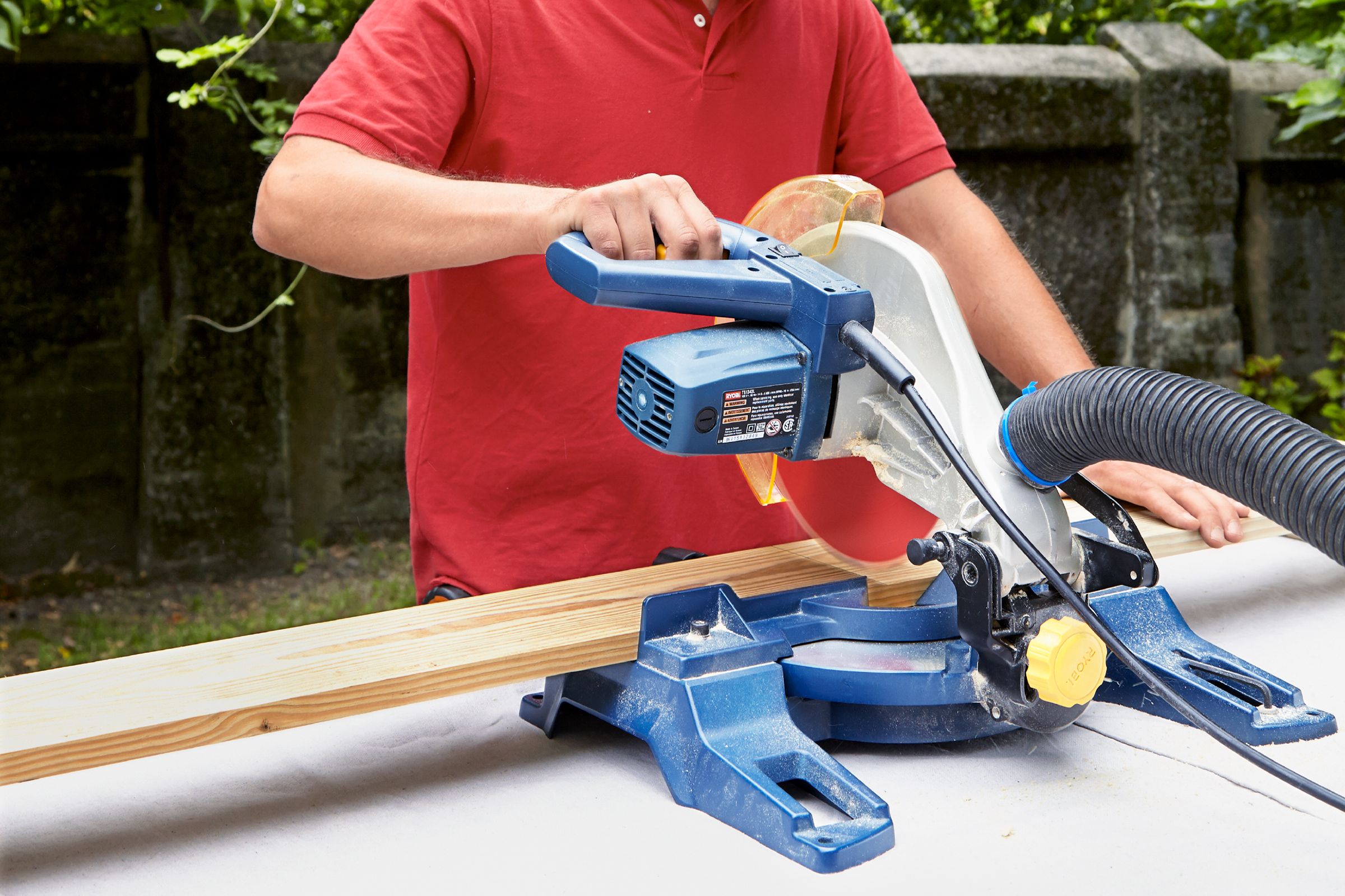
Sanding the Edges
Next, sand the edges as follows:
- Use sandpaper or an electric sander to smooth out the edges of the cut slats and battens.
- Make sure to sand the edges until they are splinter-free to prevent any injury during the assembly process.
- Wipe away any sawdust with a damp cloth. This will help with paint or stain adhesion later on.

Constructing the Rain Barrel
With the components prepared, you can begin assembling the rain barrel’s main structure.
Assembling the Sides
Follow these steps to assemble the sides:
- Lay four 1-by-6-inch slats on your work surface with 1/8-inch spacers between them.
- Clamp the assembly together, making sure everything is aligned correctly.
- Position the interior battens 5 1/2 inches from the top and bottom of the slats. This placement improves structural stability.
- Secure the battens with 1 1/2-inch deck screws. Make sure the screws are flush with the wood surface.
- Repeat this process for all four sides of the barrel.
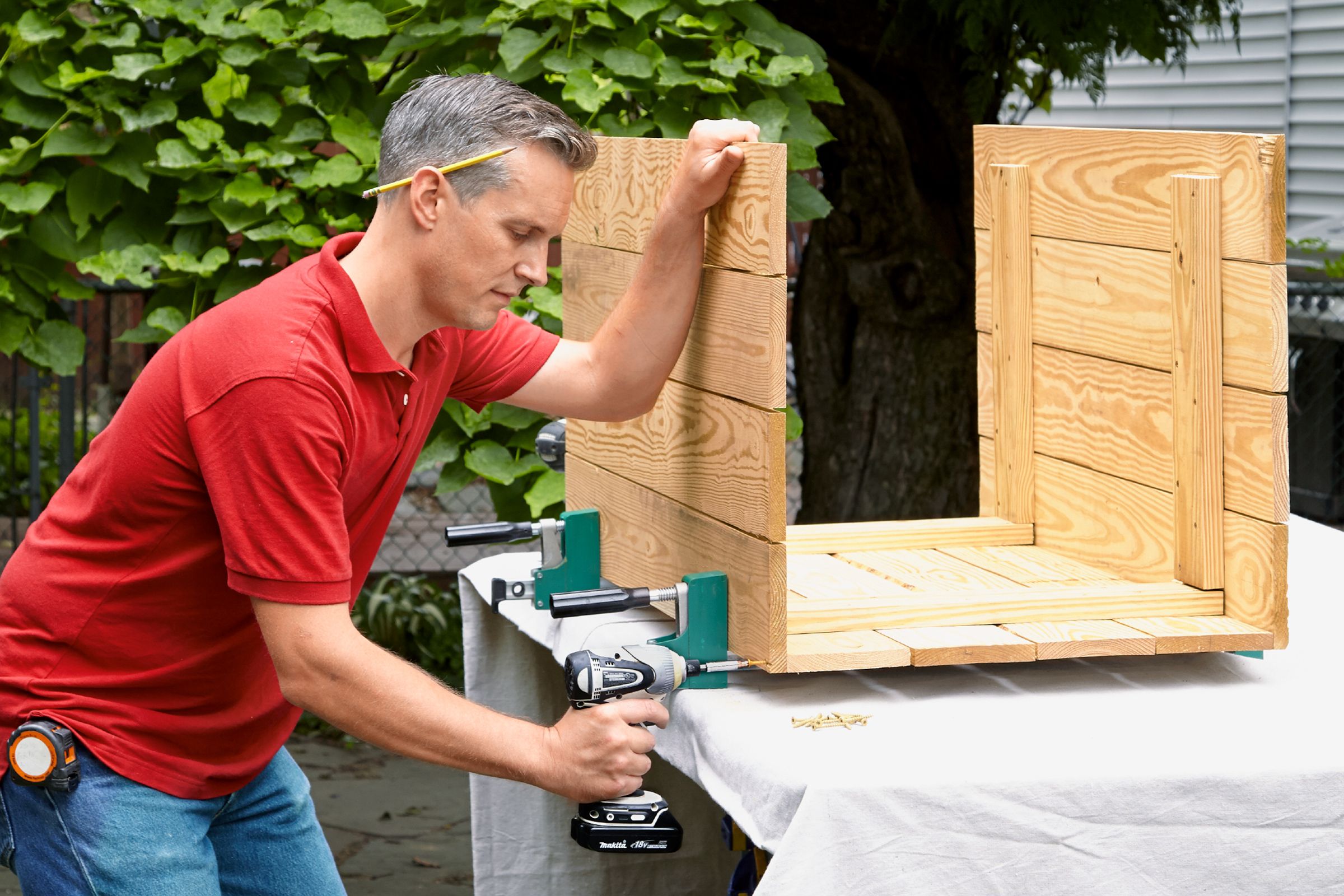
Joining the Sides
Join the sides as follows:
- Set two bar clamps on your work surface. These will hold the sides steady during assembly.
- Place a side with flush battens between the clamps’ jaws. Make sure everything is level and square.
- Stand two sides with inset battens into the clamps and tighten. This step provides a snug and secure connection.
- Drill pilot holes along the corners and secure with 1 1/2-inch deck screws. Pilot holes prevent the wood from splitting.
- Add the fourth side, drilling pilot holes and screwing it to the adjoining sides. This completes the main box structure.
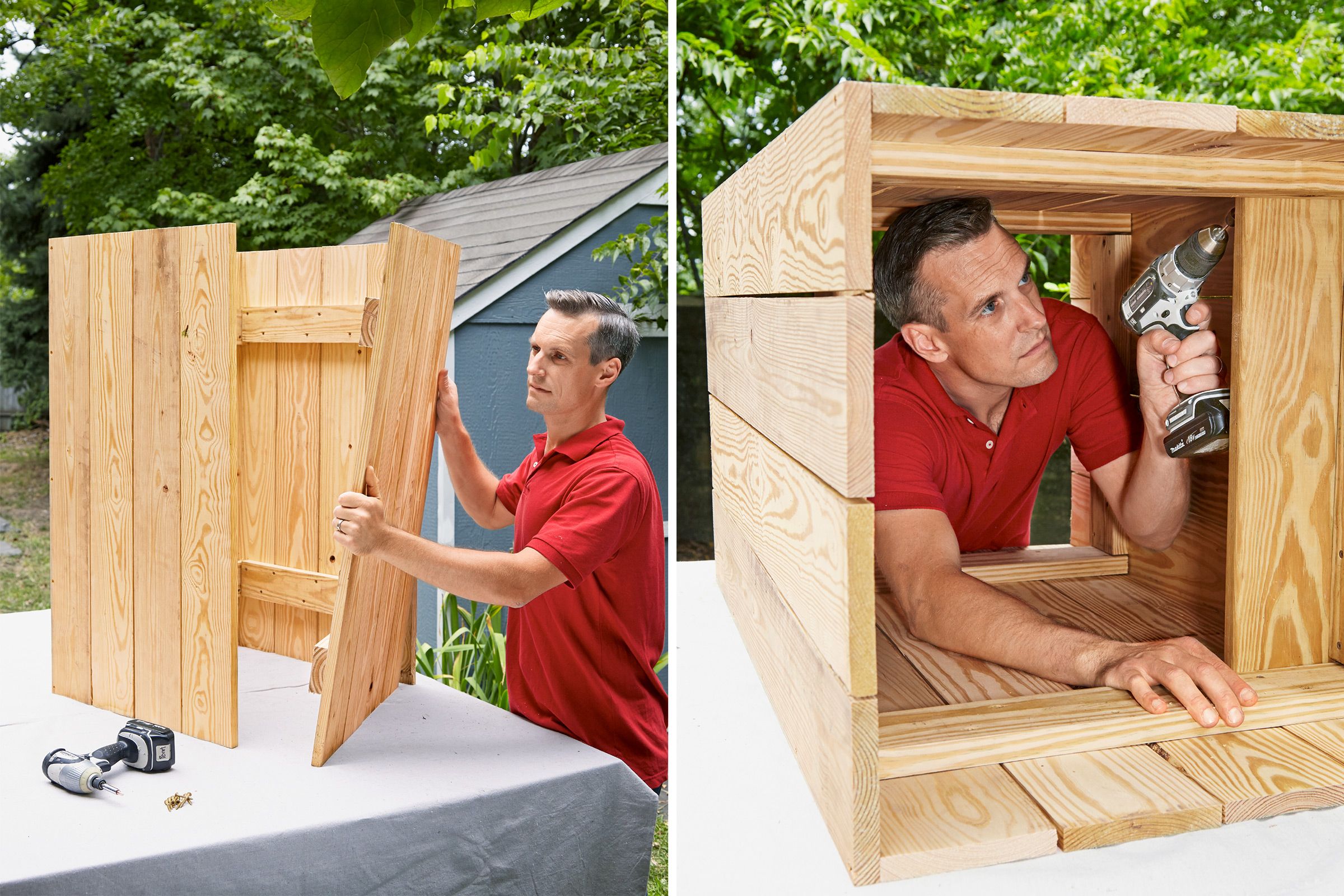
Installing the Floor
Here’s how to install the floor:
- Measure the interior dimensions just above the lower battens for an exact fit for the floorboards.
- Cut four 1-by-6-inch pieces to fit as floorboards. Double-check the measurements before making the cuts.
- Place each floorboard against the top edges of the lower battens and secure with 1 1/2-inch deck screws. This will create a stable and sturdy base for the rain barrel.
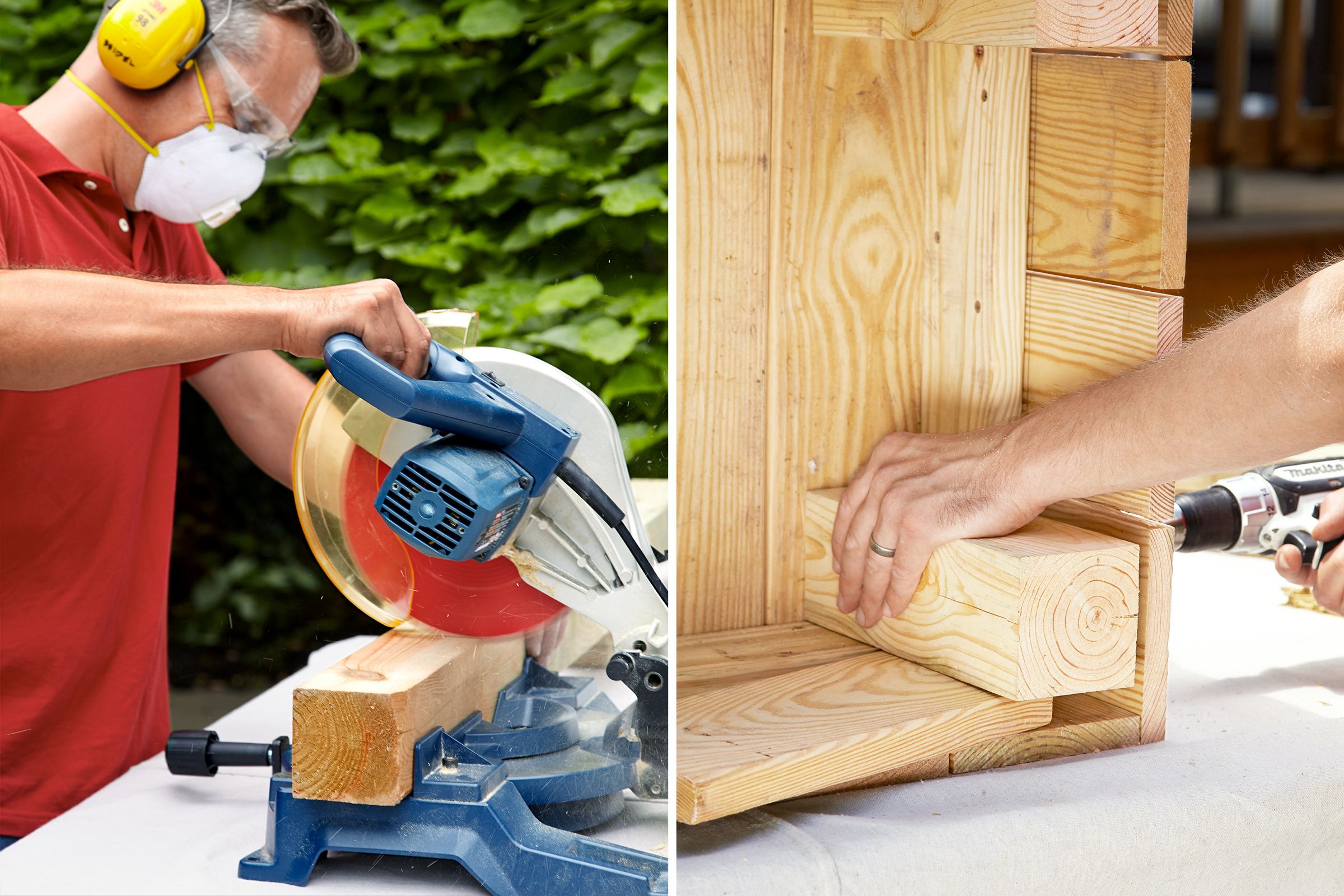
Adding the Legs
Add the legs with these steps:
- Cut four 10-inch pieces from 4-by-4-inch lumber for the legs. The height of these legs can be adjusted based on the terrain.
- Use a 5/4-inch scrap to keep each leg level at the corner during installation.
- Drill pilot holes through the slat and batten into the leg.
- Secure each leg with 2-inch deck screws on both faces, making sure they are tight and flush with the sides of the barrel.
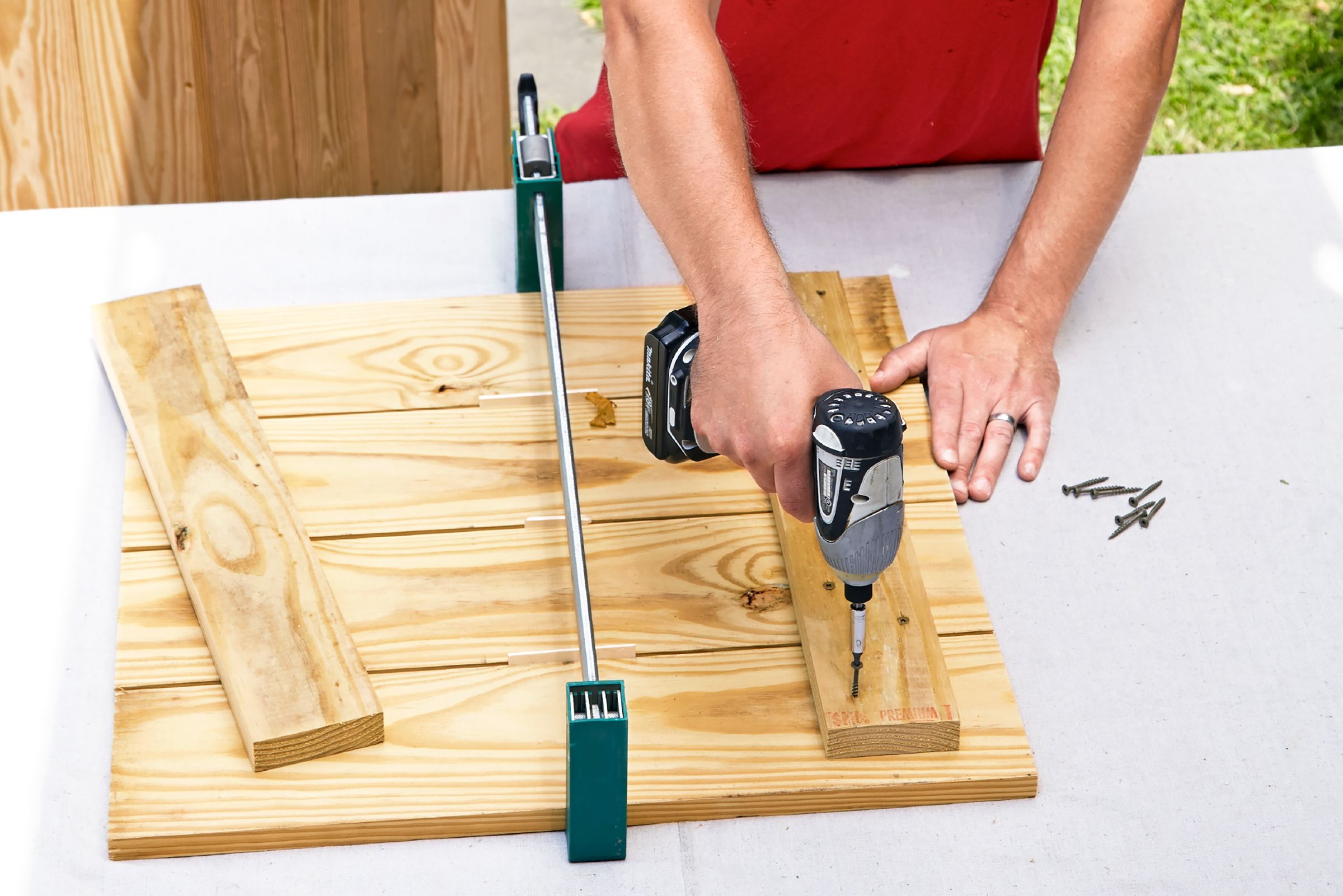
Creating the Barrel Lid and Decorative Elements
A well-constructed lid helps the water remain clean and free from debris, while decorative elements add visual appeal.
Assembling the Lid
Here’s how to assemble the lid:
- Cut 1-by-6-inch lid slats and 5/4-by-4-inch battens to fit.
- Lay out the slats with 1/8-inch spacers and clamp together.
- Position battens 2 inches from the sides and ends of the slats. This placement strengthens the lid and adds aesthetic detailing.
- Drill pilot holes and fasten with 1 1/2-inch deck screws. Make sure the screws are flush with the wood surface.
- Flip the lid over and install the door-pull handle in the center.
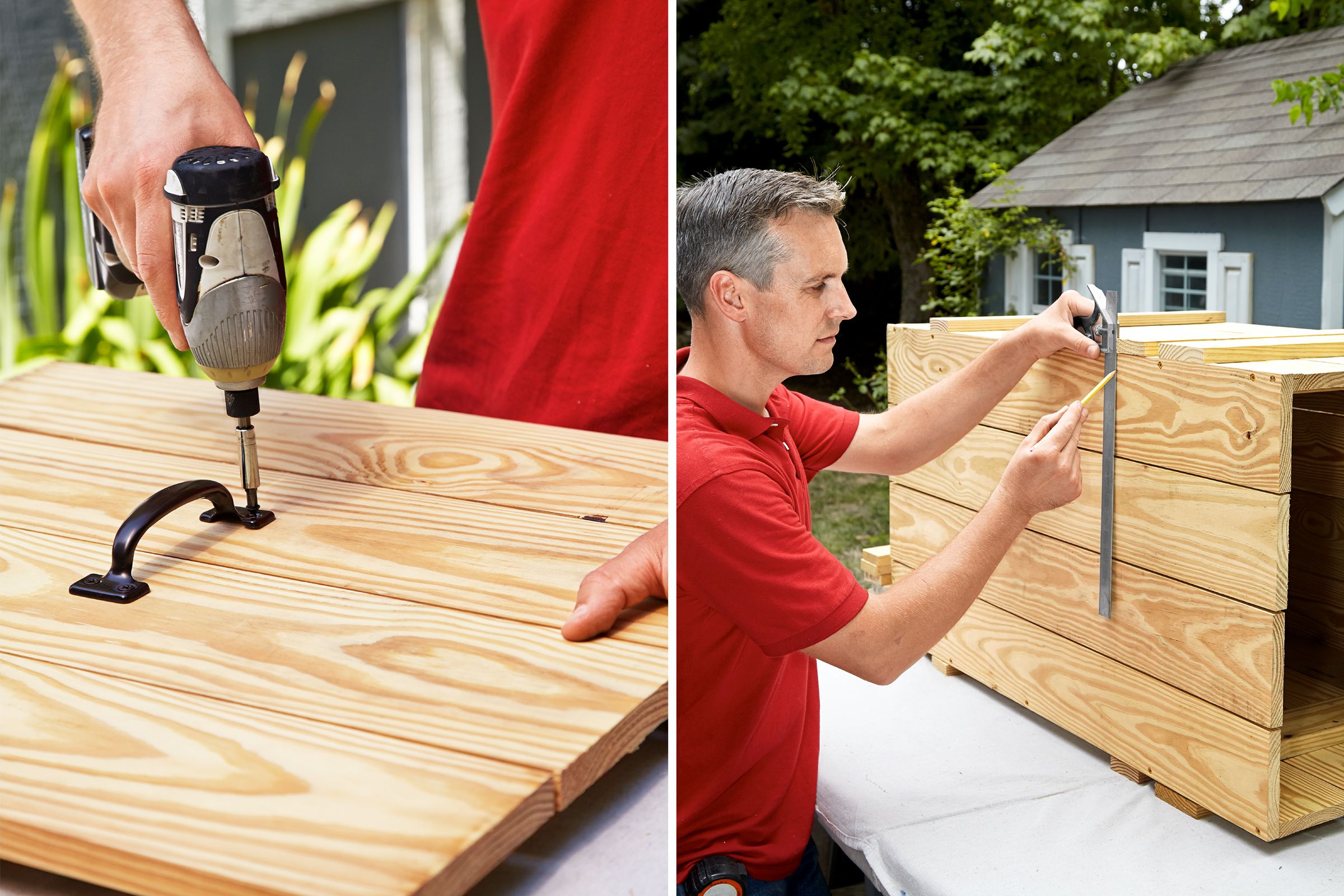
Adding Decorative Battens
You can then add the decorative battens:
- Use a combination square to mark level lines around the barrel for batten placement.
- Cut 1-by-4-inch and 1-by-3-inch boards for the decorative bands, checking for overlap at corners.
- Clamp each batten in place, drill pilot holes, and secure with 1 1/4-inch deck screws.
- Work your way around the barrel until all decorative bands are installed.
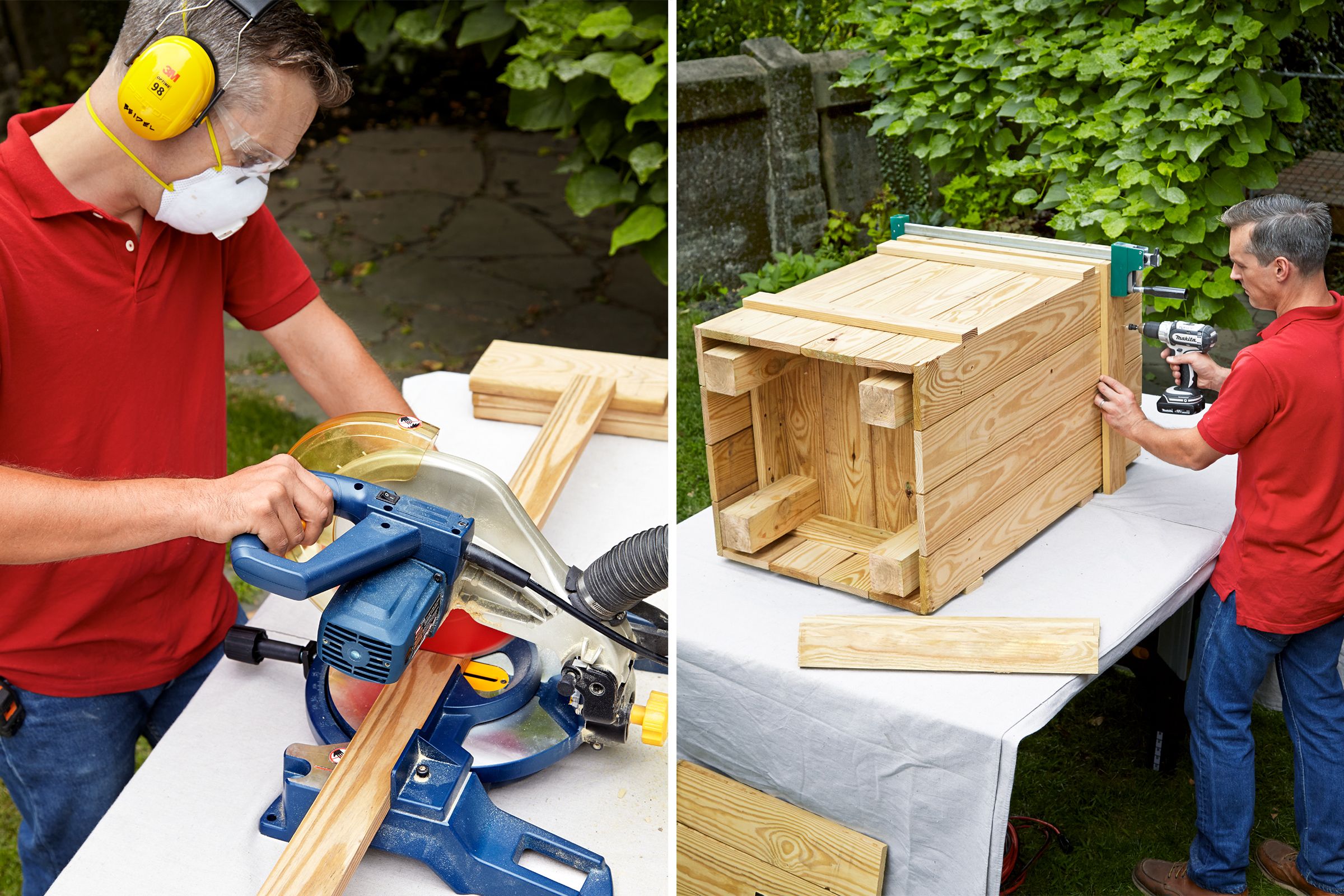
Installing Plumbing Components of the Rain Barrel
The final step is to add the necessary plumbing components to make your rain barrel functional.
Creating the Inlet and Outlet
Create the inlet and the outlet as follows:
- Place the plastic bin inside the barrel and mark the inlet location 1 inch below the rim.
- Use the kit-supplied hole saw to cut through the barrel and bin.
- On the opposite side, mark and cut an outlet hole 2 inches above the bin bottom for the hose bib.
- Insert the threaded rubber grommet into the bin’s outlet hole. Make sure it is tightly fitted to prevent leaks.
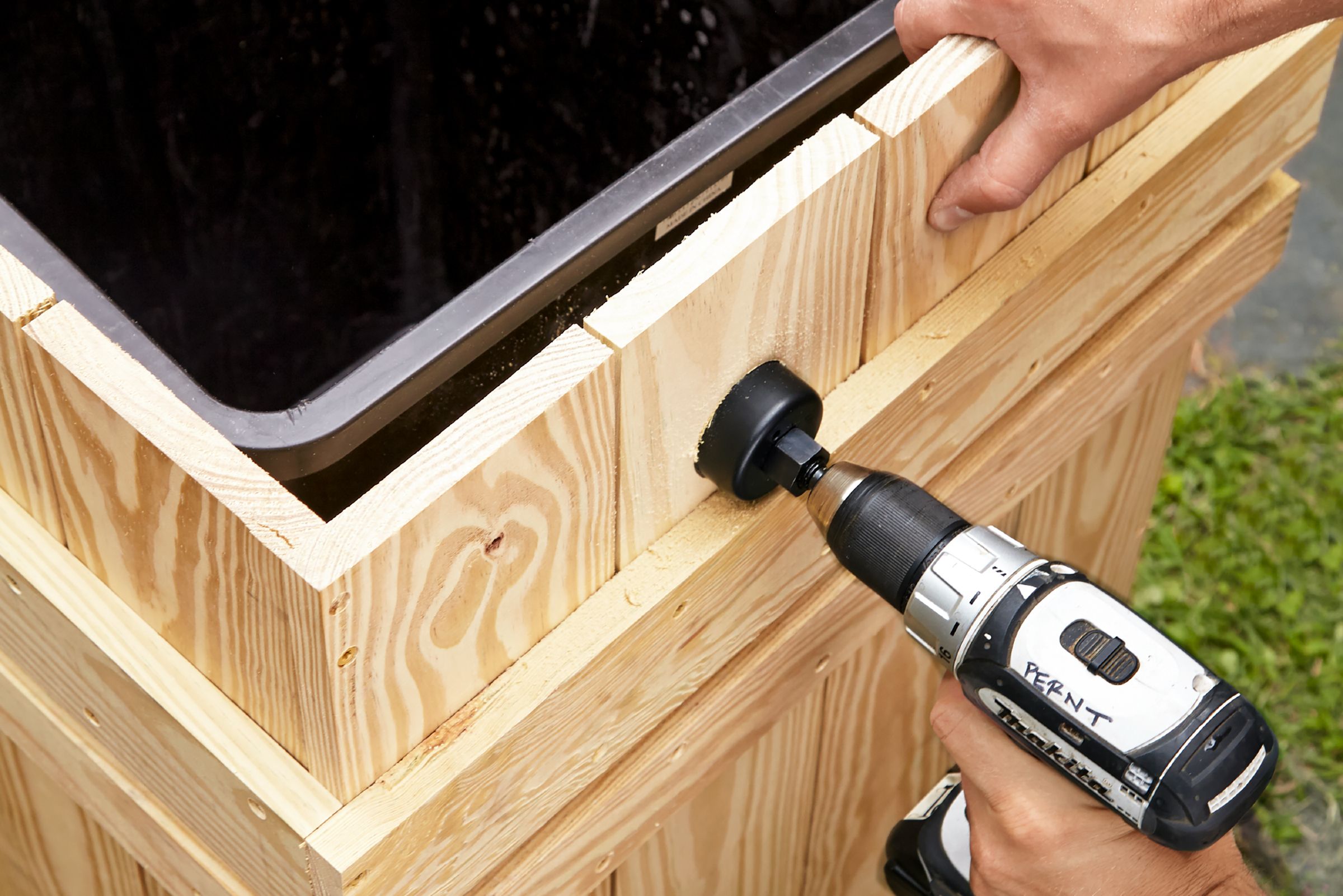
Connecting the Hose Bib
Here’s how to connect the hose bib:
- Attach the hose bib to a 3/4-by-3-inch brass nipple.
- Thread the nipple through the barrel and into the rubber grommet for a watertight seal.
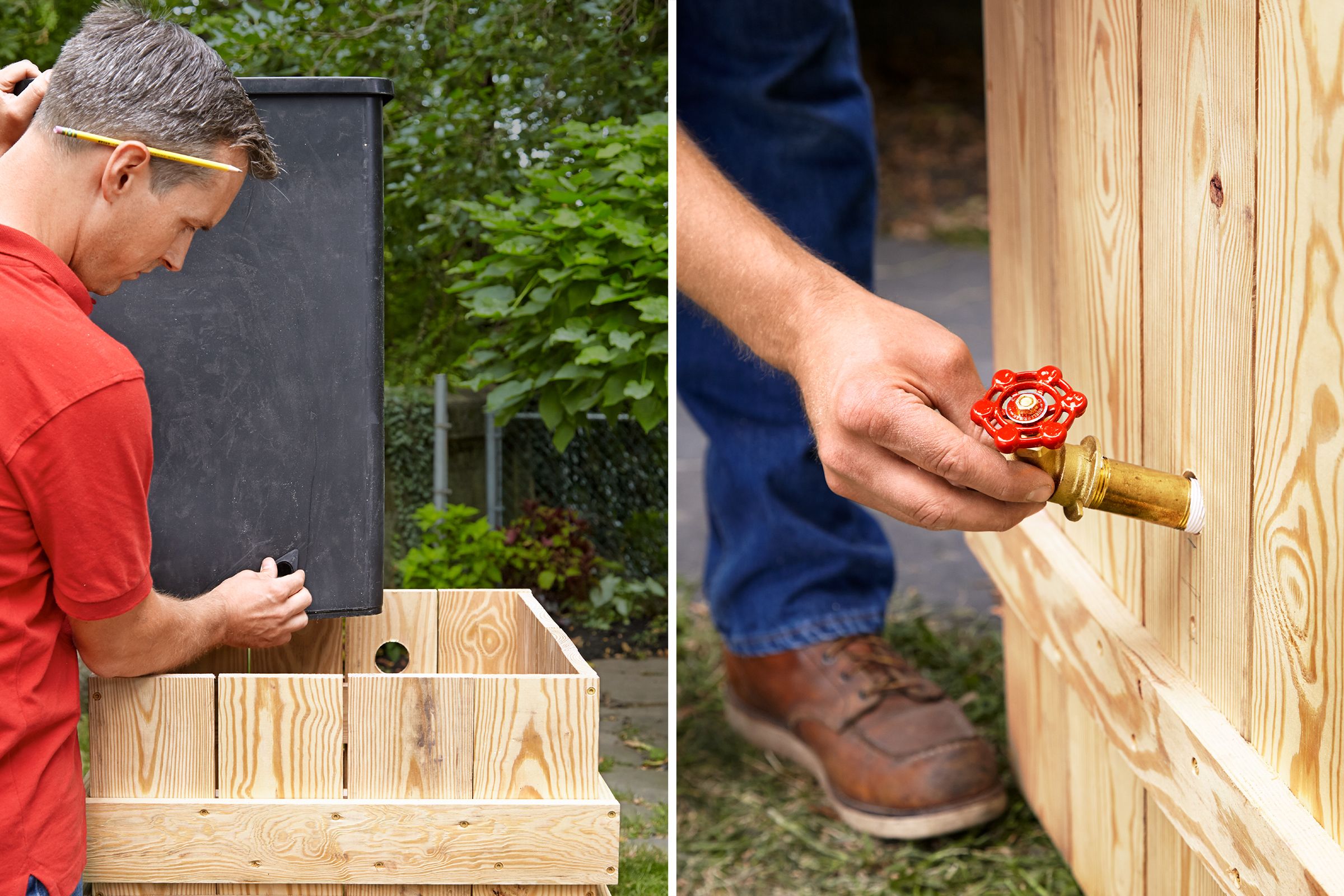
Attaching to the Downspout
Next, use these steps to attach the downspout:
- Measure the height of the barrel’s inlet hole for proper positioning.
- Mark a spot on the downspout 1 inch higher than the inlet to achieve a gravity-fed water flow.
- Use the kit’s hole saw to cut a hole in the downspout.
- Insert the diverter valve and connect the flexible hose to the barrel’s inlet.
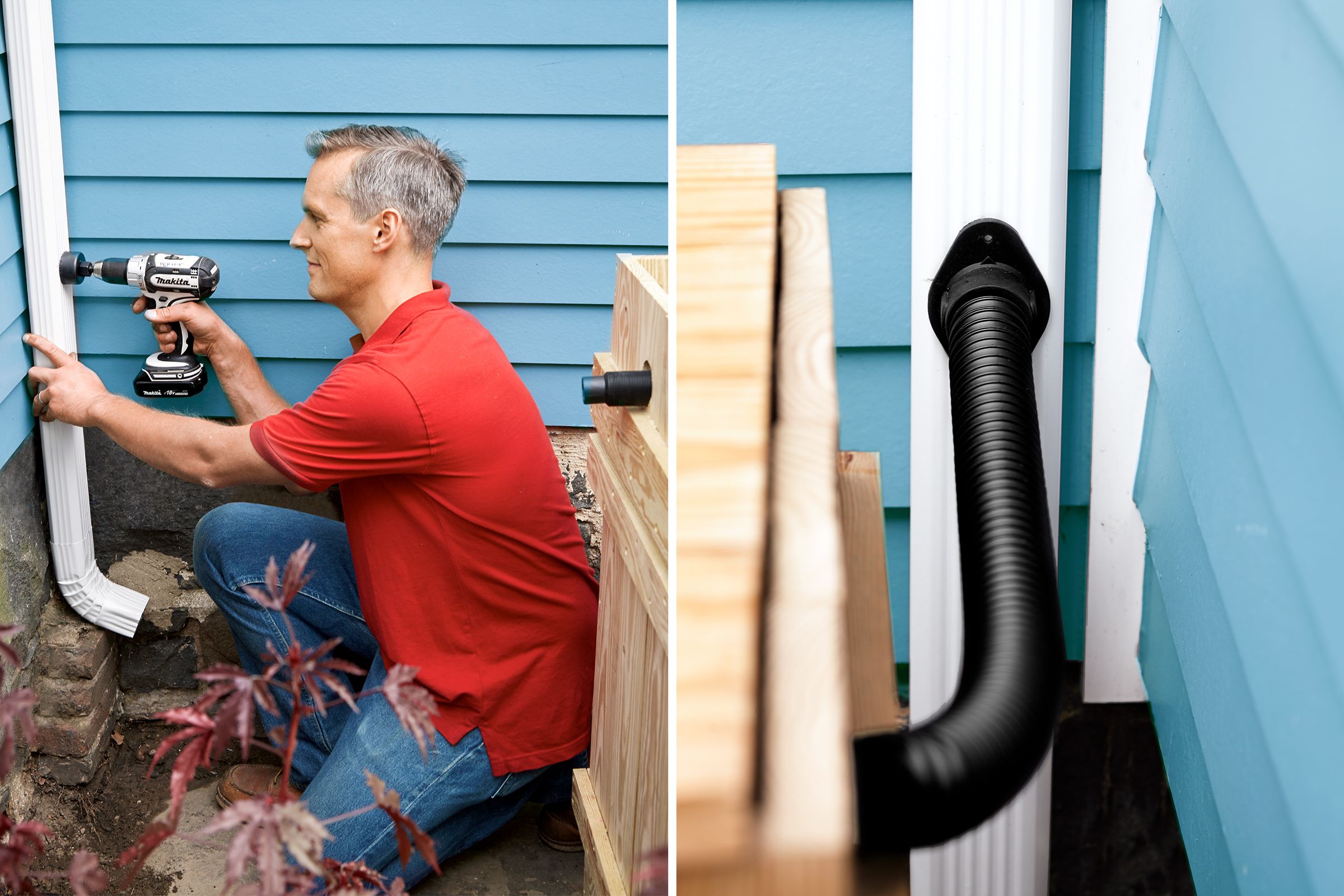
Enhancing Your Rain Barrel
Consider these enhancements to boost your rain barrel’s function and design appeal.
Adding a Spigot
A spigot allows you to fill watering cans or attach a hose for easy garden watering. You can add a spigot with the following steps:
- Install a spigot near the base of the barrel for easy access to collected water.
- Use a waterproof sealant to prevent leaks around the spigot installation area.
Incorporating a Filter
A filter prevents mosquito breeding and large debris from getting into the water. To add a filter, place a mesh screen or landscape fabric at the top of the barrel. Secure the fabric or screening with small stainless steel or galvanized screws to make sure it stays in place. Regularly clean the fabric or screen to maintain efficiency.
Decorating the Barrel
To decorate your rain barrel, add embellishments such as stencils or decals. You can also paint or stain the exterior to match your garden’s aesthetic. Choose weather-resistant paints or stains for durability. Check that the paint or stain is non-toxic, especially if the water will be used on edible plants.
Our Conclusion
A well-constructed rain barrel adds a personal touch to your landscape while conserving water. With some basic carpentry skills and the right materials, you can create this attractive water collection system.
